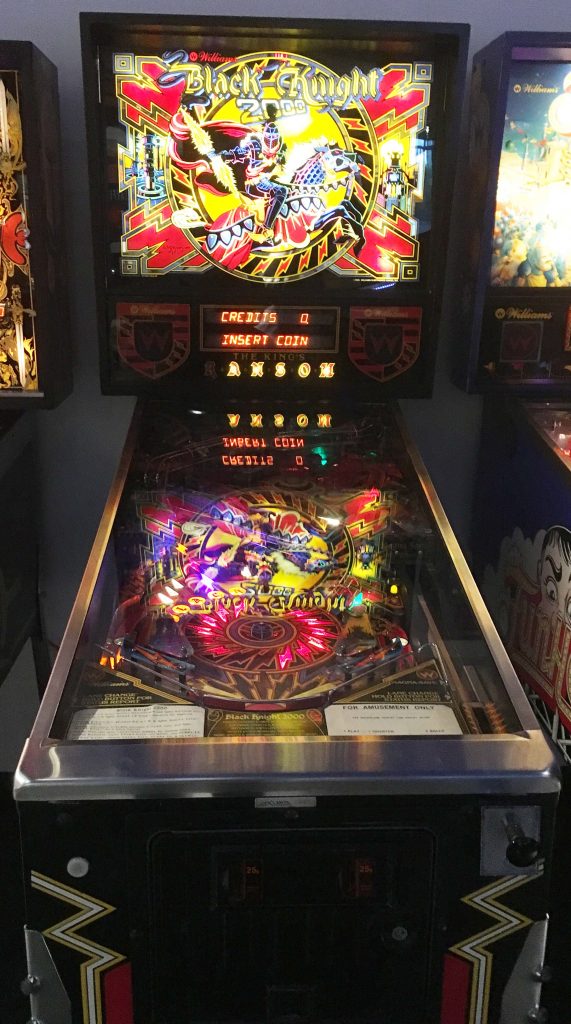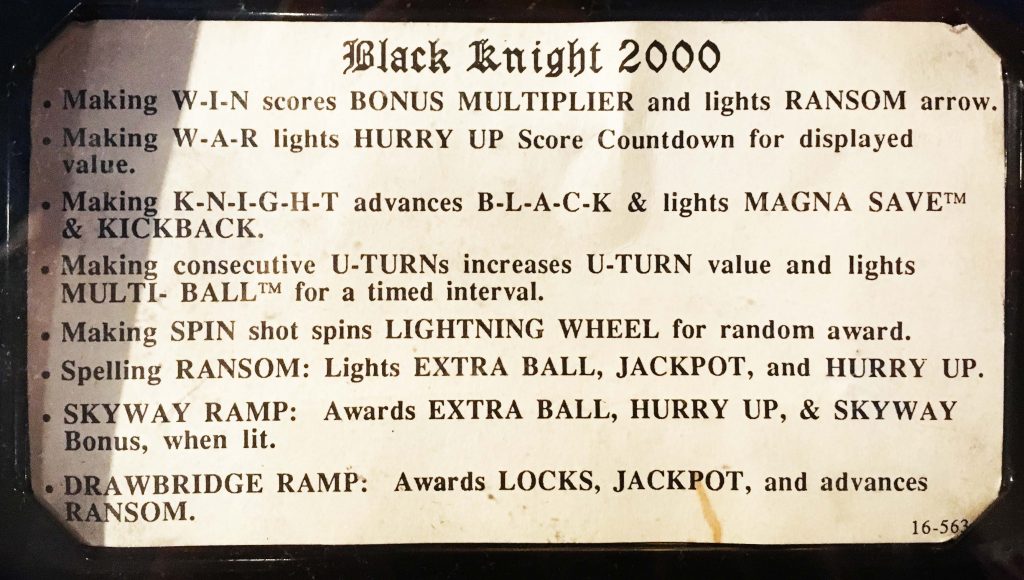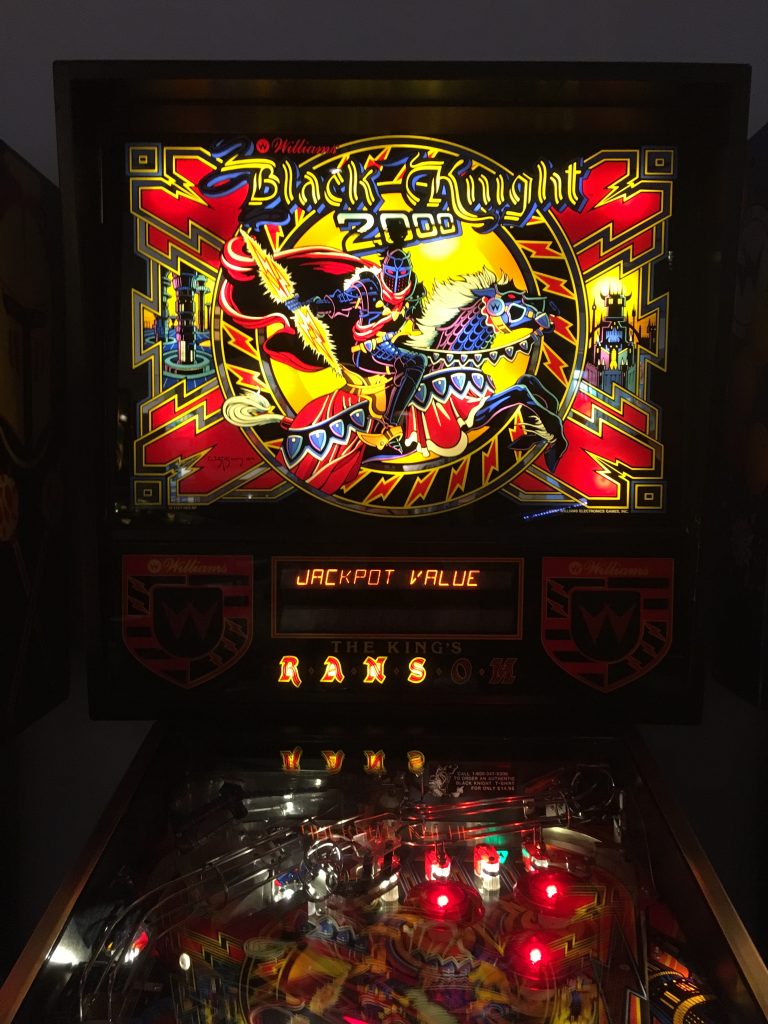By Katy Mollenkopf
Black Knight 2000 is a pinball game manufactured on April 4th, 1989 by Williams Electronics Games. A few noteworthy elements on the machine are three flippers, three pop bumpers, two ramps, a split-level playfield, a horseshoe lane, a Magna-save, and a drawbridge with some additional mechanics (from The Internet Pinball Database).

Why Black Knight 2000?
I decided to analyze this particular game because of its many gameplay features, flashy (yet consistent and indicative) coloration in the lights and on the field, and its modern/bold theme. The theme and energy drew me to it, and the game’s fast pace combined with the many intriguing features on the playfield kept me plugging in tokens.

I would definitely play this game again to see what more I could learn from it in terms of its scoring system and how exactly the elements impact the experience.
Playfield Flow
Black Knight 2000 is a fast-paced machine and contains many features between the backglass and the front of the field. Every time I played it, I found new features and ways to score more points. One of the most difficult challenges of this game reveals itself when the player overcomes the initial obstacle of getting used to the speed and features. Not only can the player have multiple balls on the field, but the physics of specific elements in the design of the machine (such as the horseshoe lane) can only be hit with a high velocity and angle (and the ball gets going pretty fast, especially if multiple U-TURNs are hit).
There is also another field above the main level. The ball enters this field on the upper level, which contains opportunities for points, a few bumpers, and one flipper on the right side. Gravity pulls the ball to the lower level, which contains a “lightning wheel” that shows the different routes players can take to earn points, hit the horseshoe (U-TURN), or spawn multiple balls. The machine itself is very responsive to the user. It was difficult to get a good picture of the upper level since the backglass reflects in it.
Scoring

The above plaque detailing the machines’s rules outlines how players can earn points. Points are accumulated and displayed on the marquee in the backglass. I was able to get a couple consecutive U-TURNs and a few extra balls (up to two at any time, though the game supports three). When an element lights up, the player can use it. For example, there is a magnet (a Magna-save in particular) near the rightmost lane in the front of the machine. When that lights up, the player can activate the magnet to save the ball from traveling down that lane and ending.
Additional Images

External References/Citations
- Williams ‘Black Knight 2000’. (n.d.). Retrieved from The Internet Pinball Database. (Accession No. 311)
Machine information obtained from The Internet Pinball Database. All photographs of the machine in this post were taken by me at the Strong National Museum of Play in Rochester, NY.
